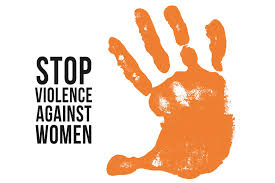
Gender-based violence: A continuous threat to society
Gender-based violence is a widespread problem that affects people of all ages, financial backgrounds, and cultural backgrounds.
Gender-based violence, which includes physical, emotional, sexual, and economic abuses, is defined as damaging acts committed against someone because of their gender. Although men and boys can sometimes become victims, women and girls are disproportionately affected by this social ill.
Gender-based violence is a serious human rights concern since it persists because of ingrained injustices and social norms that give patriarchal power systems priority.
based on gender Traditional gender roles, ingrained cultural norms, and unequal power relations are frequently the causes of violence. In many societies, men are seen as dominating and women as subservient, which feeds vicious cycles of abuse and domination.
Another contributing issue is economic dependency; women who are unable to support themselves may feel stuck in violent relationships. Furthermore, offenders can act with impunity due to cultural tolerance for violence, which is encouraged by lax legal frameworks and insufficient enforcement of the law. The issue is made worse by poverty, drug misuse, and illiteracy, which foster an atmosphere that is conducive to violence.
based on gender Violence can take many different forms, but it always leaves a lasting impact on both individuals and communities. One of the most obvious types of violence is physical violence, which includes intimate relationship and domestic abuse. The autonomy and dignity of victims are compromised by sexual violence, which includes rape, harassment, and human trafficking. Self-esteem and mental health are undermined by psychological abuse, which is frequently less acknowledged. Restricting employment possibilities or denying financial resources are examples of economic aggression that encourages reliance and disempowerment. Each form of violence perpetuates cycles of trauma, often affecting multiple generations.
The consequences of Gender-based Violence are profound and far-reaching. For victims, the physical effects include injuries, disabilities, and, in severe cases, death. Psychologically, survivors often experience depression, anxiety, and Post-traumatic Stress Disorder.
Socially, they may face stigmatisation, isolation, and a loss of economic opportunities. Communities bear the brunt of GBV as well, with increased healthcare costs, reduced workforce productivity, and destabilised social cohesion. In regions where Gender-based Violence is widespread, the fear of violence limits individuals’ freedom, particularly women’s participation in education and public life.
Addressing Gender-based Violence is fraught with challenges. Cultural taboos and victim-blaming discourage survivors from reporting abuse, leaving many cases unrecorded. Insufficient funding and resources for shelters, counselling services, and legal aid exacerbate the problem. Additionally, judicial systems in many regions are often slow or biased, failing to deliver justice for survivors. Gender bias in law enforcement and a lack of female representation in leadership roles further hinder progress.
Community involvement is essential to tackling Gender-based Violence. Education plays a critical role in shifting mindsets, with awareness campaigns challenging harmful stereotypes and promoting gender equality.
Community leaders, religious figures, and local organisations must take a stand against violence, advocating for zero tolerance. Empowering survivors through access to healthcare, counselling, and economic opportunities is equally important. Legal reforms, coupled with strict enforcement, are needed to deter perpetrators and ensure justice.
The fight against Gender-based Violence requires collective effort from governments, civil society, and individuals. Policies promoting gender equality, such as access to education and employment for women, can help dismantle the structures that sustain Gender-based Violence. Men and boys must also be engaged as allies, learning to challenge toxic masculinity and support equality. Ultimately, addressing Gender-based Violence is not only about protecting victims but also about fostering a society where everyone, regardless of gender, can live with dignity and safety.
There is an urgent need to address gender-based violence as a violation of fundamental human rights. Communities can end the cycle of violence and create a more secure and inclusive future by tackling its underlying causes, aiding survivors, and promoting equality.
It is one of the most prominent human rights abuses in all nations and is an issue that has its roots in gender inequality. Violence against a person based on their gender is what it is. Although gender-based violence affects both men and women, women and girls make up the majority of victims.
Since it is commonly known that men are the ones who perpetrate the majority of gender-based violence against women and girls, the terms gender-based violence and violence against women are frequently used interchangeably. Nonetheless, the use of the "gender-based" component is crucial because it draws attention to the reality that power disparities between men and women are at the heart of many types of violence against women. Because of the disproportionately high frequency of these specific crimes against women, the phrases are used interchangeably throughout EIGE's work.





